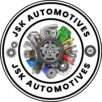Owning a Hyundai is all about comfort, reliability, and smooth performance. Whether you drive a Hyundai Creta, i20, Verna, Tucson, or Santro, one thing keeps your car running perfectly—Hyundai Genuine Parts.
Every vehicle needs part replacements over time, whether due to regular wear and tear, an accident, or routine maintenance. But when it comes to replacing car components, choosing genuine parts over cheap imitations can make all the difference in safety, longevity, and performance.
This guide will walk you through everything you need to know about Hyundai Genuine Parts—why they matter, how to identify them, where to buy them, and how to avoid counterfeit parts. By the end, you’ll know how to protect your Hyundai’s performance and value while saving money on maintenance.
Why Hyundai Genuine Parts Matter
Hyundai builds its vehicles with precision-engineered components, designed to work seamlessly together. Over time, parts like brake pads, filters, spark plugs, belts, and electrical systems need replacement.
Using genuine Hyundai parts ensures:
- Perfect Fit & Compatibility – Designed specifically for your model.
- Reliability & Safety – Reduces the risk of breakdowns and accidents.
- Warranty Protection – Keeps your car’s warranty valid.
- Better Resale Value – Cars with authentic parts fetch better prices.
- Long-Term Savings – Prevents repeat repairs caused by cheap parts.
On the other hand, fake or substandard parts can:
- Wear out quickly
- Cause performance issues
- Damage your vehicle’s systems
- Void your warranty
Types of Hyundai Replacement Parts
When shopping for replacements, you’ll typically find three types of parts:
1. Hyundai Genuine Parts
These are original components manufactured by Hyundai or its certified partners. They’re the exact same parts installed in your car at the factory.
Why Choose Genuine?
- 100% compatibility
- Backed by Hyundai warranty
- Tested for quality and safety
2. OEM (Original Equipment Manufacturer) Parts
OEM parts are made by the same manufacturers that produce parts for Hyundai but may not carry the Hyundai logo.
Benefits:
- Same quality and specifications as genuine parts
- Slightly more affordable
3. Aftermarket Parts
Produced by third-party companies, aftermarket parts come in various qualities and prices.
Pros:
- Budget-friendly options
- Available for almost every Hyundai model
- Some performance upgrades
Cons:
- Quality can vary widely
- Risk of poor fit or faster wear
Pro Tip: Stick with genuine or trusted OEM parts for critical systems like brakes, engine components, and electronics, and use reputable aftermarket brands for accessories or cosmetic parts.
How to Identify Hyundai Genuine Parts
Counterfeit auto parts are common, especially for popular brands like Hyundai. Here’s how you can make sure you’re buying the real deal:
- Check the Packaging – Genuine parts come in branded Hyundai packaging with proper labeling.
- Look for Holograms & Barcodes – Authentic parts often carry a hologram or QR code for verification.
- Confirm Part Numbers – Match the part number with your car’s service manual.
- Buy from Authorized Dealers – Avoid unknown sellers or marketplaces without verified reviews.
Where to Buy Hyundai Genuine Parts
Getting the right parts at the right price is easy if you know where to look:
1. Hyundai Dealerships
Best for guaranteed genuine parts, though prices may be slightly higher.
2. Authorized Service Centers
They stock genuine parts and can handle professional installation.
3. Trusted Online Stores
Websites like Hyundai’s official portal or verified auto parts retailers provide access to genuine and OEM parts.
4. B2B Exporters (for Bulk Buyers)
For distributors and importers, JSK Automotives and other trusted exporters supply Hyundai, Kia, Renault, Ford, and Mahindra parts worldwide.
Common Hyundai Genuine Parts You’ll Need
Some parts require regular replacement to keep your vehicle in peak condition.
- Engine Oil Filters & Air Filters – Replace during routine servicing.
- Brake Pads & Rotors – Typically every 30,000–50,000 km.
- Spark Plugs – Every 30,000–60,000 km, depending on the model.
- Timing Belts & Chains – As per the manufacturer’s schedule.
- Wipers, Bulbs, & Electrical Components – As they wear out.
Cost-Saving Tips for Hyundai Owners
Buying genuine parts doesn’t always mean breaking the bank. Here’s how to save:
- Compare Prices – Check multiple sources (dealerships, online, exporters).
- Look for Seasonal Discounts – Many suppliers offer festive or clearance sales.
- Buy in Bulk (for Businesses) – Importers and workshops can save by buying wholesale.
- Use Aftermarket for Non-Critical Items – Accessories, mirrors, or cosmetic parts can be aftermarket, but avoid for engines or brakes.
- Regular Maintenance – Prevents major failures and reduces part replacements.
